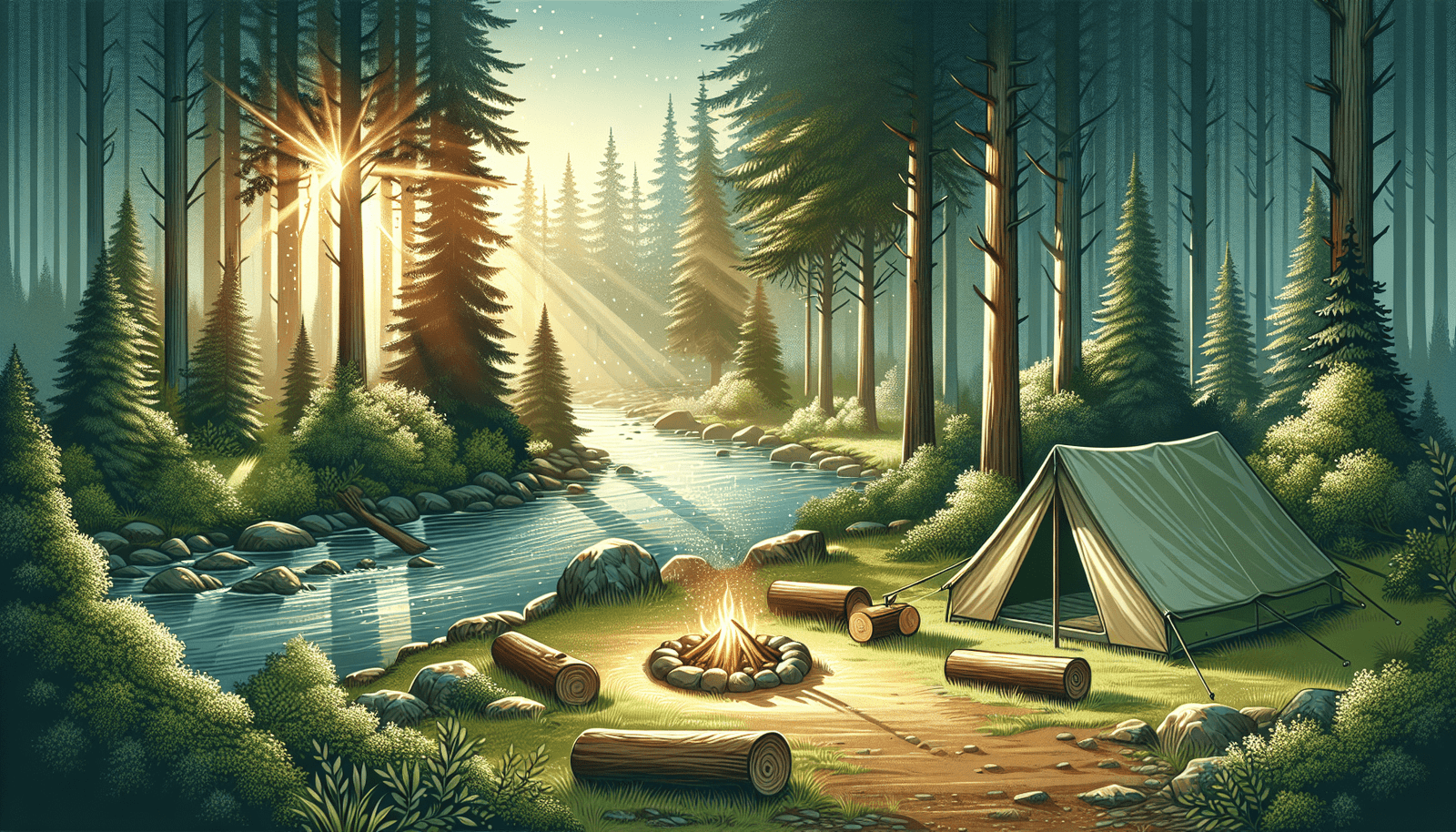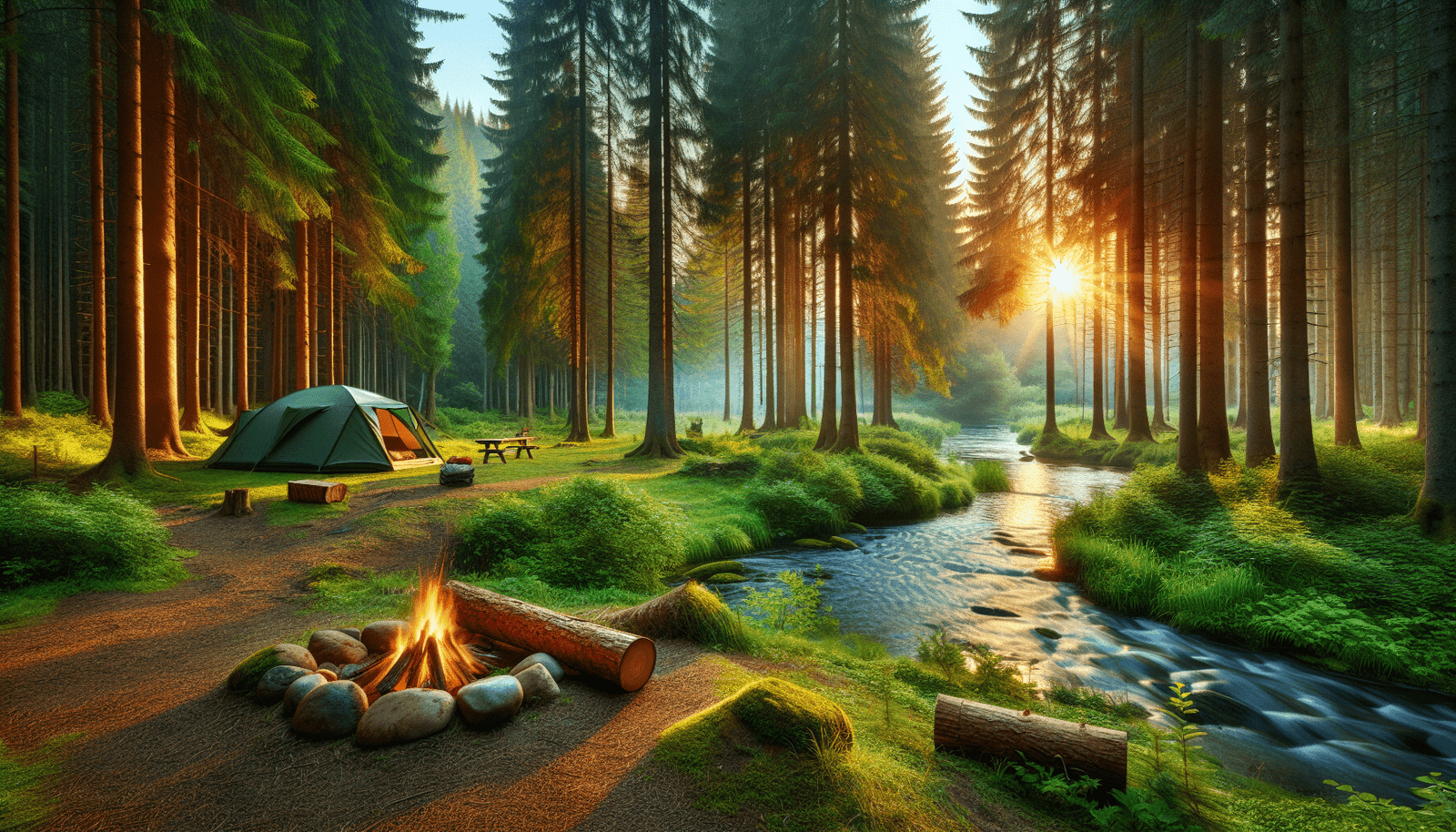Finding the perfect spot to set up your campsite can make all the difference in your outdoor adventure. In “What Is The Best Location For A Campsite?”, you’ll learn the essential factors to consider for a memorable camping experience. From assessing terrain and accessibility to ensuring safety and environmental responsibility, this guide provides everything you need to choose a campsite that suits your needs and enhances your connection with nature. Get ready to discover the ideal location for your next camping trip, ensuring comfort, safety, and enjoyment in the great outdoors.
What Is The Best Location For A Campsite?
Have you ever found yourself wondering, “What is the best location for a campsite?” If so, you’re in the right place! In this article, we’re going to dive deep into the factors that can make or break your camping experience. Whether you’re a seasoned camper or a first-timer looking to get it right, finding the perfect spot involves understanding several key elements. Let’s explore them together!
Why Is Choosing the Right Campsite Important?
Camping is an incredible way to connect with nature, relax, and recharge. However, the location of your campsite can significantly affect your overall experience. Selecting the right spot can mean the difference between a peaceful retreat and a weekend of discomfort. Safety, convenience, and the enjoyment of your surroundings all hinge on where you decide to pitch your tent.
Factors to Consider When Choosing a Campsite
Many factors come into play when determining the ideal camping spot. From terrain types and weather patterns to regulations and proximity to amenities, several elements can influence your decision. Let’s break these down one by one.
Terrain and Ground Surface
The type of ground you’ll be sleeping on is crucial for a good night’s sleep and overall comfort. Here are some key points to consider:
| Terrain Type | Advantages | Disadvantages |
|---|---|---|
| Clearing | Flat surface, easy to set up camp | Exposed to wind, less natural cover |
| Grass | Soft and comfortable for sleeping | Can become muddy if it rains |
| Sand | Comfortable and easy to dig in stakes | Not very stable, can get everywhere |
| Forest Floor | Natural cover, sheltered | Uneven ground, more insects |
| Gravel | Drains well, stable surface | Harder surface to sleep on, need a good pad |
Water Source Proximity
Access to water is essential for drinking, cooking, and cleaning. However, camping near a water source requires careful consideration:
- Pros:
- Convenient access to water for daily needs.
- Opportunities for fishing, swimming, and other activities.
- Cons:
- Risk of flooding, especially during rainy seasons.
- Higher likelihood of encountering mosquitoes and other insects.
Sun Exposure
The amount of sunlight your campsite receives can impact your comfort:
- Morning Sun: Helps warm up your campsite and dry morning dew quickly.
- Afternoon Shade: Keeps your tent cool during the hottest parts of the day.
Wind Exposure
Wind can influence your camping experience in various ways:
- Pros:
- Helps keep insects at bay.
- Can provide natural cooling in warm climates.
- Cons:
- Can make cooking challenging.
- Risk of damaging your tent and other gear.
Safety Considerations
Your safety should always be a top priority when selecting a campsite:
- Avoid Low-lying Areas: These can become waterlogged and prone to flooding.
- Check for Hazards: Look for falling branches, rocks, or other potential dangers.
- Wildlife: Be mindful of local wildlife and set up camp in areas less frequented by animals.
Distance from Amenities
Depending on your comfort level and camping style, you may prefer to be closer to certain amenities:
- Near Facilities: Easy access to restrooms, showers, and picnic areas.
- Far from Facilities: Offers more seclusion and a true wilderness experience.

Types of Campsites
Understanding the different types of campsites can help you decide which one suits your needs best. Here are common options:
Developed Campsites
Developed campsites are managed by park services or private entities and offer various amenities.
- Advantages:
- Access to restrooms, showers, and potable water.
- Designated fire pits and picnic tables.
- Often have parking spaces and clear paths.
- Disadvantages:
- Can be crowded, especially during peak seasons.
- Less privacy and a more structured environment.
Dispersed Campsites (Backcountry)
Located in undeveloped areas, dispersed campsites offer a true back-to-nature experience.
- Advantages:
- Greater privacy and seclusion.
- Often situated in more scenic and pristine locations.
- Disadvantages:
- No access to facilities; you must bring everything you need.
- Requires more preparation and wilderness skills.
Leave No Trace Principles
No matter where you choose to camp, following the Leave No Trace principles is crucial for preserving the environment:
- Plan Ahead and Prepare.
- Travel and Camp on Durable Surfaces.
- Dispose of Waste Properly.
- Leave What You Find.
- Minimize Campfire Impact.
- Respect Wildlife.
- Be Considerate of Other Visitors.
By adhering to these guidelines, you ensure that the natural beauty remains intact for future generations.
Regional Considerations
Different regions offer different camping experiences. Here are some considerations based on popular camping destinations:
Mountainous Areas
Camping in the mountains provides breathtaking views and cooler temperatures:
- Features:
- Elevated terrain with stunning vistas.
- Abundant hiking and outdoor activities.
- Considerations:
- Weather can be unpredictable; sudden storms are common.
- Altitude sickness can affect some campers.
Forested Areas
Forested campsites offer lush greenery and ample natural cover:
- Features:
- Shelter from wind and sun.
- Rich wildlife and plant ecosystems.
- Considerations:
- Can be damp and buggy, especially in summer.
- Fallen branches and uneven ground can be hazards.
Desert Areas
Desert camping provides unique landscapes and starry skies:
- Features:
- Dramatic, arid surroundings with less vegetation.
- Cooler nights due to lack of humidity.
- Considerations:
- Extreme temperature fluctuations; hot days and cold nights.
- Limited access to water sources.
Coastal Areas
Camping near the coast combines the sounds of waves with refreshing sea breezes:
- Features:
- Opportunities for swimming, fishing, and beachcombing.
- Cooler, breezy environment.
- Considerations:
- Saltwater can be corrosive to gear.
- Coastal areas can be windy and prone to sudden weather changes.

Tips for Finding the Perfect Campsite
Here are some practical tips to help you find the ideal camping location:
Research and Planning
- Use Resources: Utilize maps, guidebooks, and online forums to gather information about potential sites.
- Check Regulations: Verify camping regulations and permit requirements for your chosen area.
- Know the Weather: Check the forecast and pack accordingly.
Arrive Early
- Best Spots: Arriving early increases your chances of securing the ideal spot, especially in popular areas.
- Setup Time: Gives you plenty of time to set up camp and make adjustments if needed.
Scout the Area
- Walk Around: Explore the area on foot before settling on a final spot.
- Test Ground: Ensure the ground is level and suitable for pitching a tent.
Conclusion
Selecting the best location for a campsite involves a careful balance of terrain, proximity to water, sun and wind exposure, safety, and personal preferences. By considering these factors and doing thorough research, you’ll be well on your way to finding a spot that enhances your outdoor adventure.
So next time you plan a camping trip, remember these tips and enjoy the amazing experience that the great outdoors has to offer. Happy camping!
